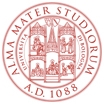DeepOpt - Encoding Deep Networks in Combinatorial Optimization Models
DeepOpt - Encoding Deep Networks in Combinatorial Optimization Models
Google Faculty Research Award
Principal investigators: Michela Milano, Michele Lombardi
The Empirical Model Learning (EML) technique allows to turn classical Machine Learning models (Neural Networks and Decision Trees) into components of larger and more complex optimization models. The approach enables the design of Decision Support tools heavily based on data, operating over complex real-world systems, or to easily turn a predictor into a component of a decision support system. The goal of this project is extending the EML technique to tackle more modern and powerful Machine Learning models.
Our primary target will be Deep Neural Networks, while Random Forests will be considered in a second stage. As a case study, the approach will be deployed for synergistic management of equipment and workload in a data-center.
- Definition of an Encoding: The main part of the project will focus on finding encodings and reasoning algorithms that can be effective on Deep Networks. Different encodings and corresponding propagation algorithms will be defined. Even if our main target is to embed deep networks in constraint programming tools featuring propagation and domain Filtering (Google-or tools will be the final target), we will also consider Mixed Integer Non Linear Programming tools such as BARON.
- Data and Model Acquisition: This activity is not the main focus of the project, but it is crucial for its success. Given the short time frame, we plan to rely as much as possible on data and models available from the ongoing Multitherman project. In particular, we have already access to job mapping and power consumption data for the EURORA supercomputer. Simplified control-theory models for the cooling system are available, while extracting more advanced models will require data (still to be obtained) from either room measurements or simulation.
- Definition and Evaluation of an Optimization model: Our encoding techniques will be employed to define an optimization model where jobs and the cooling system are managed in a synergistic fashion. Our optimization approach will be evaluated primarily in a simulated environment. We plan to have experiments on a real supercomputer, but a one-year time frame may be insufficient to achieve this goal.
